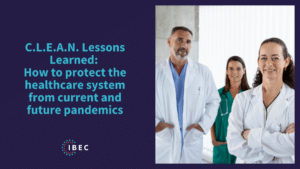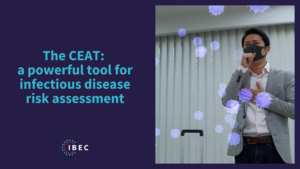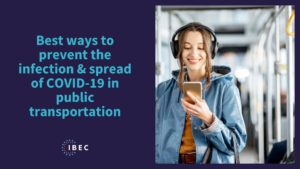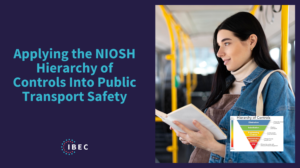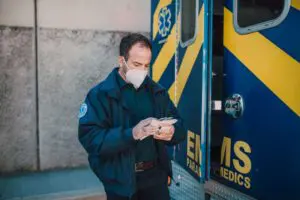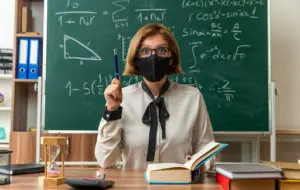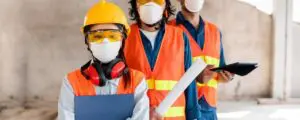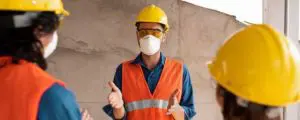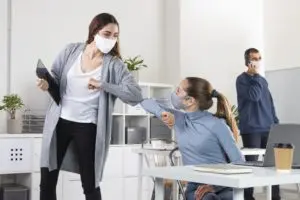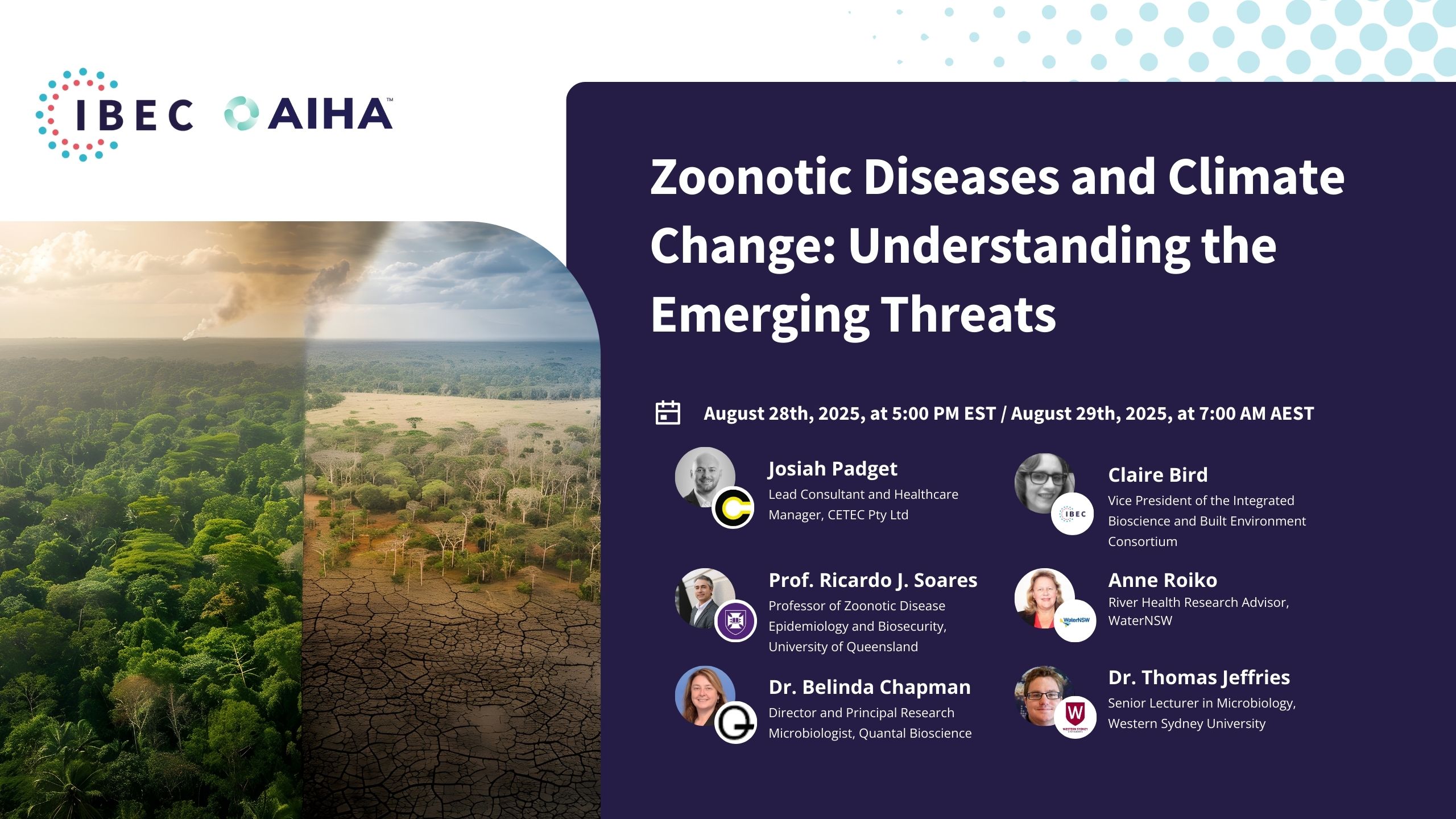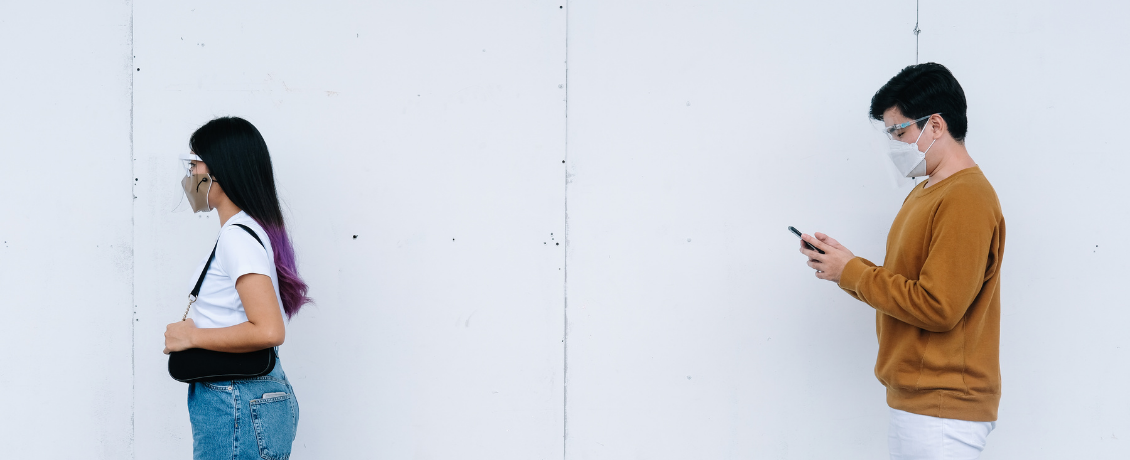
This is an extract of our CLEAN Lessons Learned September session: Resilience, Recovery, Return: Getting back to School Confidently and Safely. To have access to the entire session, become an IBEC member today.
When COVID-19 broke into the news, there was a sense of complete misguidance regarding the guidelines needed to keep people safe.
We knew we had to distance ourselves and quarantine socially; however, where to look at and who to trust was a bit more complex than that.
Today, we have a clearer view of the guidelines that may help us reduce our exposure to COVID-19. This topic was deeply discussed at our September CLEAN Lessons Learned session – Resilience, Recovery, Return. Getting back to School Confidently and Safely.
This session gathered 6 panelists:
- Kate Cole: current President-Elect of the Australian Institute of Occupational Hygienists.
- Bryon Price: Chair of the Board of the Facility Management Association of Australia and Global FM Board member.
- Dana Hollins: She currently serves on the Editorial Board for the Toxicology and Industrial Health journal.
- Jennifer Hughes, Ph.D., MPH_ Associate Professor and Licensed Psychologist at the UT Southwestern Center for Depression Research and Clinical Care (CDRC).
- Joanne Beames, PhD: early-career postdoctoral research fellow at the Black Dog Institute, University of New South Wales (2019-current).
- Hunter Heck: first-year law student at the University of Virginia School of Law and former student body president at Texas Tech University.
Continue reading to learn more about what was discussed by these panelists in terms of COVID-19 and guideline following.
AIHA’s Guidelines
At the beginning of the pandemic, AIHA formed a back-to-work safely task force with volunteers from different realms of knowledge.
They knew that we needed practical, easy-to-use, easy-to-follow, and easy-to-understand guidance based on science and on established Occupational Safety and Health methodology.
AIHA focused these guidance documents on small and medium-sized organizations; they wanted clear guidance specifically targeted at an audience that may not have a technical background.
These guidance documents are free, readily available, and easy to download from AIHA’s website.
AIHA focused on smaller school districts, smaller universities, community colleges, trade schools, historically black colleges, and universities.
Essentially, those entities may not have access to hiring health and safety professionals to guide how to reopen and operate safely.
The guidelines were focused on common questions that they received from employers, employees, students, and visitors. AIHA tried to concentrate on a multi-layered risk mitigation approach, considering what would be practical for a small organization to do.
The main topics covered were hand and respiratory hygiene, ventilation, masking, physical distancing, cleaning, ventilation density reduction, and recommendations about staying home when sick.
One of their takeaways is that our professional community is a responsive and effective resource in times of crisis. However, it was not enough to write the guidance documents; they needed partnerships.
There is a need for marketing and collaborations with organizations such as IBEC to get the important information in the hands of those that need it most. And also to get feedback from those organizations on the specific guidance documents relevant to their industry sector.
CO2 Monitors – Do They Work?
What about carbon dioxide monitors?
Do they work?
These monitors are easy to read, and you can even give them to your kids. They got a little traffic light system on it.
More than ever, there is the significant importance of good indoor air quality to reduce infection risk. Co2 monitoring is a fantastic predictive model that we can use in classrooms and other indoor spaces to assess the risk and take action.
We recommend keeping it around 600 parts per million indoors (ppm). If it gets above 800 ppm, then you should open some windows.
When the indoor CO2 reads around 1500 ppm, that’s when we have to take a big step back and look at bringing in a lot more interventions. Those interventions might include HEPA purifiers or reducing the amount of occupancy.
We have to be clear about the expectations of carbon dioxide monitors; they don’t say what is safe and what is unsafe; they’re helping us assess a lower risk and a higher risk scenario and then prompting us to take action to reduce that risk.
So for example, it’s not to say that if you get to a certain point that the sky is falling, but if we do get above 1500 parts per million, then that tells us that we need to do more to bring fresh air in and get contaminated area long term.
Because to reduce the risk of infection, we have to create environments indoors with good indoor air quality.
Interventions For The Young – How To Tackle Them
The Black Dog Institute has researched the pandemic’s mental health and psychological impacts on young people.
Generally, they have found that distress and common mental health problems like anxiety and depression have been problematic across this time, but also that some young people are more at risk than others.
Some young people have shown intense resilience levels and demonstrated effective coping strategies during this time. This is why it’s important to remember that there are kind of two sides to the coin, there are positives and some negatives, and things look a little bit differently for specific individuals.
They have been working with schools across Australia to deliver digital prevention programs in research trials. The idea is that this will help better understand how such programs can be supported and rolled out in schools to all students when they need them the most.
These prevention programs come with interventions for young people involved in the process, which is essential. They have been targeting issues like sleep and unhelpful thinking patterns.
Lastly, one of the other things they are also advocating for is the development of technologies with young people. So not just developing them for them, but involving them in that CO2 design process.
People tend not to be involved in decision-making processes and are hesitant when ideas are enforced more authoritarian way.
Involving young people in those processes could be a handy way forward in that regard.
Ventilation, Ventilation & More Ventilation
It’s essential to manage expectations and perceptions around ventilation. Ventilation is not a silver bullet. However, good ventilation will make aerosol transmission less likely.
The second thing crucial to understand is the mechanism of aerosol transmission and how ventilation can help mitigate it.
When it comes to aerosol transmission in a simplistic sense, as you are existing, you are also breathing out small aerosol particles. That’s the reason why breath is warm and wet.
There are these tiny particles, and if you’re infected with infectious disease in your respiratory tract, those particles that are breathing out a virally loaded, and so, therefore, somebody in your space can breathe those in and become infected.
When you start thinking about what ventilation could do, it’s pretty helpful to think about that almost in a cigarette smoke sense. Remember the days when we used to smoke inside
If you had multiple people in a room smoking, it would become a real haze unless you had good ventilation.
The first thing to think about ventilation is dilution. The idea is to dilute the concentration of those aerosols; you’re trying to dilute that concentration quickly. The second thing is trying to move those aerosols away from people.
In terms of airflow, there are essentially two types of ventilation settings. There are mechanical ventilation systems where we’re introducing air into rooms and removing it from rooms, and we have non mechanically ventilated settings.
Next time you are in an indoor space, think about how you can transform the area into a safer place by changing the ventilation in the room.
There’s a lot of guidance available, and it’s becoming more and more practical. There are many HVAC specialists out there that can help you as this is not new science.
We have been doing this in healthcare settings for many years in terms of ventilation. And it’s well understood how to achieve improved ventilation fought for these sorts of better outcomes.
Conclusion
There are always lessons that we can learn from these types of crises. It is more than clear that we do need proper planning and multidisciplinary teams that include industrial hygienists and medical professionals, biosafety professionals, and HVAC engineers.
We also need to prioritize publishing guidance documents intended for those who may not have access to health and safety professionals.
For example, during the Victorian second wave, which infected over 4000 healthcare workers in Victoria in Australia, occupational hygienists joined task forces that the Department of Health established to help them write the guidance on respiratory protection.
Also, when we had a national task force to look at the healthcare, associated infections & standards, occupational hygienists joined those task forces to make sure that the guidance didn’t just focus on patient safety but also focused on workplace health and safety.
It’s actually about us working together and providing that collaborative approach to get that fantastic outcome at the end.
Each one of us has an essential part to play.
Which part are you playing on stopping the spread of COVID-19?
Related Blogposts
C.L.E.A.N. Lessons Learned: How to protect the healthcare system from current and future pandemics
The COVID-19 pandemic caught the world off guard. Health organizations all over the globe rushed into a quick response to protect people from the threat…
The CEAT: a powerful tool for infectious disease risk assessment
The CEAT is a powerful tool for infectious disease risk assessment. Keep reading to learn about its development and use. We will never forget March…
Best ways to be safe from COVID-19 in public transport
Since the beginning of the pandemic, industrial hygienists have been researching and broadcasting the information needed to prevent the infection & spread of COVID-19. Under…
NIOSH Hierarchy of Controls for Public Transport
In our latest CLEAN Lessons Learned Session – Making Confidence Our Travel Companion: Managing the environment to reduce public transport transmission, we discussed how the…
How to Protect first responders from the Spread of Covid-19
After the impact of COVID-19 on our society, it has become evident that one of the industries whose workers are most affected is first responders.…
How to Protect teachers and educators from the Spread of Covid-19
It’s not a surprise that one of our society’s most affected industrial sectors is the education sector. Despite the 2020-21 academic year ending better than…
How to Protect Agriculture Workers from the Spread of Covid-19
The construction industry has been significantly affected by the COVID-19 pandemic while being challenged to improve its workforce safety and well-being. Since COVID-19 started, there…
Interview with J. Frederick: COVID-19 and vulnerable workers
Since COVID-19 started, we have been looking for the right resources and standards to navigate our experience in the world safely. All over the world,…
How To Improve Indoor Air Quality – An OSTP Discussion on COVID
The Biden-Harris Administration identified improved indoor air quality as an essential tool to fight the spread of airborne diseases in the American Pandemic Preparedness Plan…
Why Did It Take So Long To Accept COVID Is Airborne?
This is an extract from our August CLEAN Lessons Learned session “Getting Serious About Airborne Infection Transmission” where Dr. Lidia Morawska gave a presentation about…
- « Previous
- 1
- 2
- 3
- Next »

